Find The Best Dive Lights For Lembeh Diving
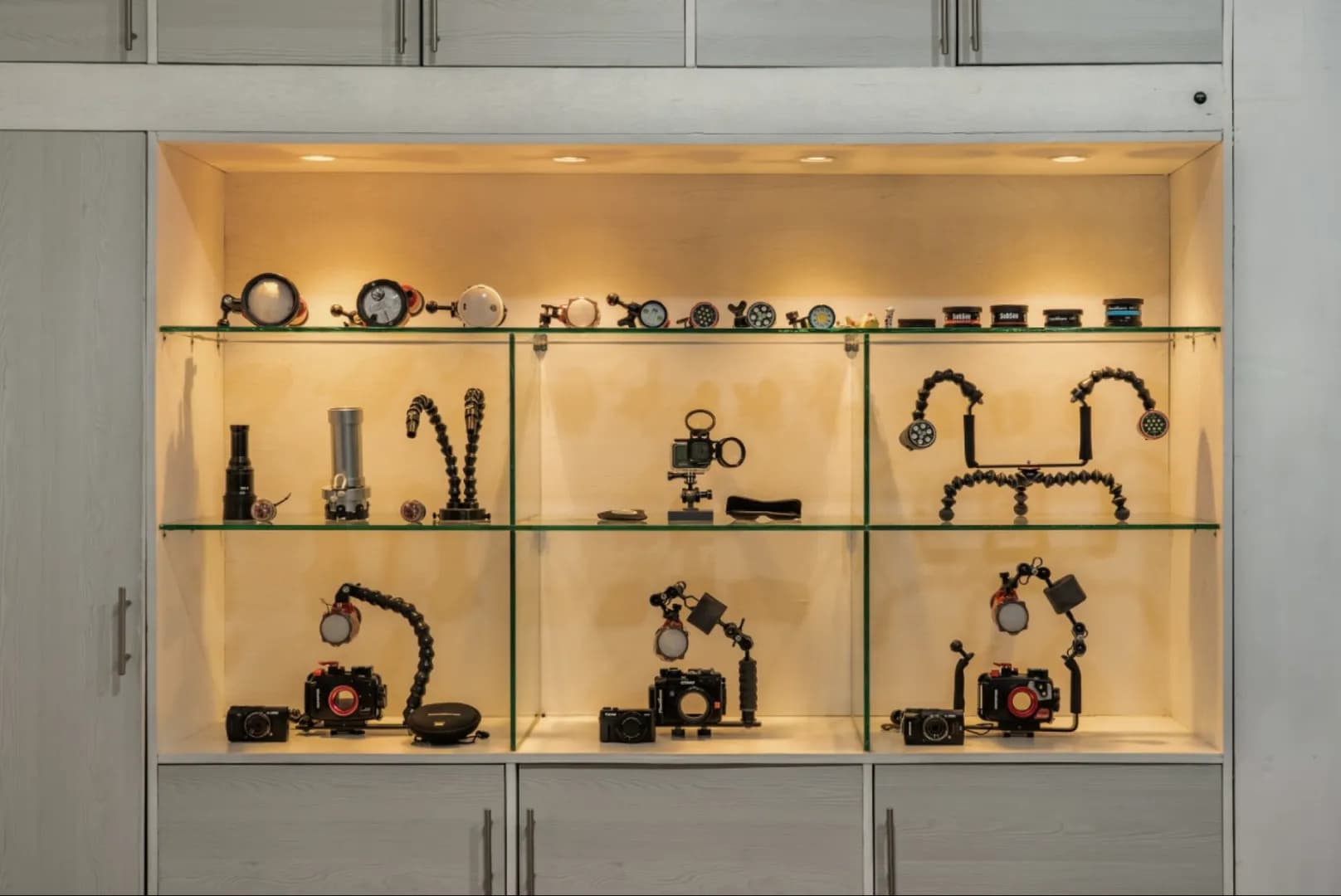
Are you planning to invest in your first dive light or is it time to replace or upgrade your existing dive light? In this Blog we take a look at dive lights in more detail including types of lights and bulbs, dive light features, and the various optional extras available on the market.
We also dive into different light choices for different purposes – including lights for muck divers visiting Lembeh. Finally, we’ll take a closer look at dive light maintenance and care to ensure that your next light lasts longer!
Introducing Dive Lights
Dive lights are an essential part of dive equipment that can benefit all divers on most dives. There are several types of lights that are designed for different uses and dive conditions. However, regardless of the purpose you are considering purchasing a light for, there are a few considerations to take into account before making an investment..
Dive Light Purposes
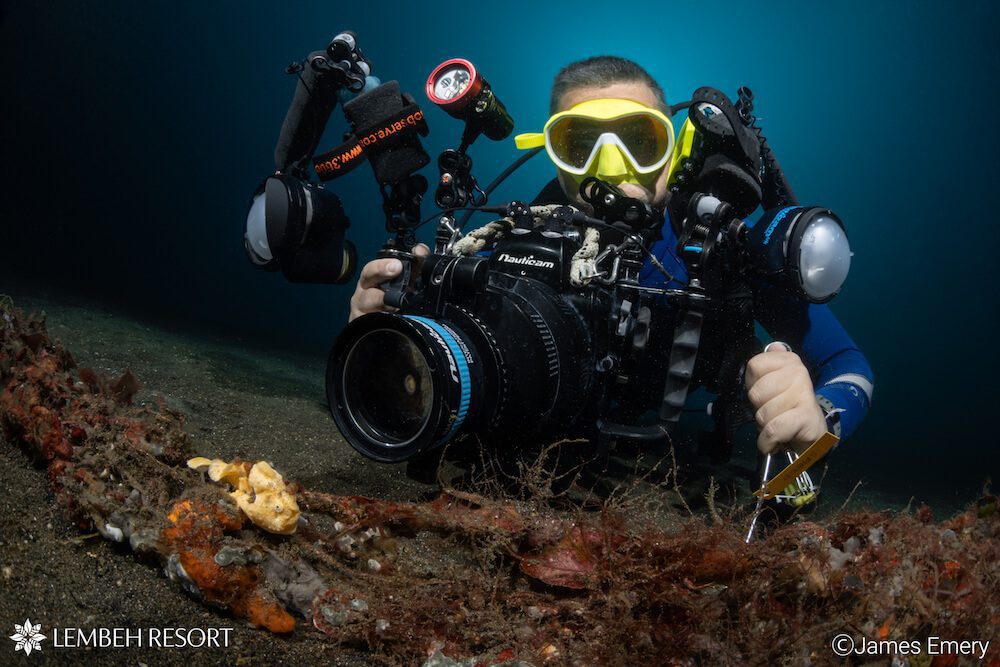
Photo Pro Saeed Rashid photographing juvenile warty frogfish
Gradually, we are seeing a growing trend whereby divers are coming to realize the benefits of diving with a dive light, outside of night diving alone. On daytime dives where no ambient light exists (such as when cavern or cave diving), dive lights will illuminate your surroundings – and they can be used to communicate with other divers.
When diving during daylight hours in ambient light, dive lights can be used to restore colors that are lost with depth – especially red tones which are the first to disappear underwater. It is for this reason that underwater photographers use lights*, flashes, strobes or video lights to capture stronger and more accurate colors when shooting underwater.
*Note: the lights used in photography and videography differ to the standard dive lights that we are discussing here. Macro underwater photographers may also be interested in our Macro Underwater Photography Lighting Tips article.
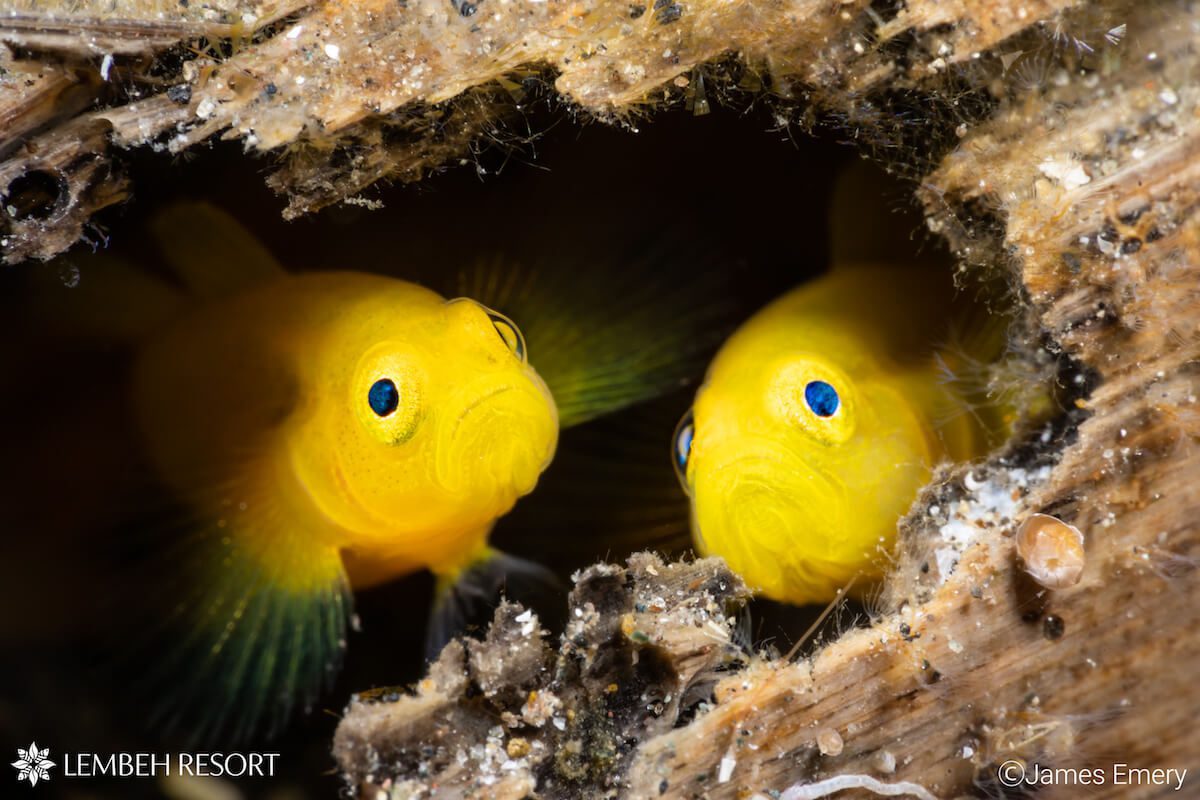
When diving in the Lembeh Strait spotting critters is part of the fun and a good quality dive light can help with this immensely. Dive lights can be used to illuminate low-light environments such as under ledges or in crevices. These are places where critters often hide out and could be missed without the benefit of additional light. For this reason, you will see that many of our guides carry small lights with them on every dive.
Dive Lights for Safety
From a safety perspective, dive lights can also help signal an emergency above or below the water. A rapid back-and-forth motion underwater indicates a diver in distress. On the surface, a dive light can get the attention of the dive boat or a rescue helicopter, assuming conditions will allow it to be visible from afar.
The Lembeh Strait offers phenomenal blackwater diving opportunities and for this, we use specific blackwater lights. Blackwater lights are different to what a diver would ordinarily carry. Blackwater lights are suspended beneath the boat to provide powerful light, directed downward. The main purpose of blackwater lights is to attract plankton from the deep, which then attracts an array of critters and marine life larvae. These lights are well beyond the needs of daytime and regular night divers.
Primary and Backup Dive Lights
Remember that dive lights originated from the needs of night divers. It has long been established that when night diving, all divers carry both a primary light and a backup light. Therefore, most lights will fall into one of these two categories.
- Traditionally, primary lights were generally larger models with more powerful and wider beams, however, you can now also find very bright smaller lights that can also easily function as primary lights.
- Backup lights are usually smaller with narrower beams – something you might carry on every dive and definitely on night dives in case of a primary light failure.
Types of Dive Light Bulbs
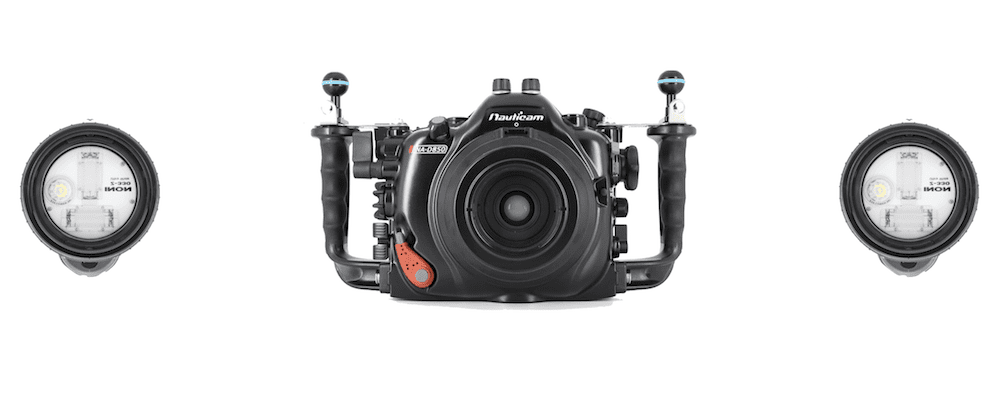
The image above shows strobes positioned at 3 o’clock and 9 o’clock
It is important to note that the type of bulb a light uses (and the light’s battery power) is the main influence on a dive light’s brightness.
- LED Light Bulbs
LED (light-emitting diode) lights are now extremely popular due to their powerful beams. LED bulbs are also highly durable and energy efficient. There are a wide range of models on the market from very affordable choices to more expensive options.
- Halogen and Xenon Light Bulbs
Halogen and xenon bulbs produce bright light but consume a significant amount of battery power making them less suitable for divers who may make three or more dives a day.
- HID Light Bulbs
HID (high intensity discharge) bulbs provide twice as much light from half as much battery and tend to work better than LED lights in murky water. However, HID lights are generally more expensive and there are less options on the market – specifically at the more economic end of the spectrum.
Standard Dive Light Features
Most dive lights (both primary and backup) offer the following features as standard:
- A rugged outer casing that is watertight and pressure resistant.
- A dependable switch that is easy to turn on and off. Switches should be easy to operate even when wearing gloves that compromise dexterity.
- Watertight O-ring seal(s) that give you access to the batteries and the bulb. Any part of the light that opens should be backed up by an O-ring seal to prevent any water leakage.
- Many lights come with a wrist lanyard or clip so that if you need to, or if you accidentally, let go of the light it remains attached to you. If a lanyard or clip is not included, there should at least be a ring, hole, or loop of some kind that a lanyard or clip can be attached to.
Optional Dive Light Features
- Rechargeable or Disposable Batteries
Initially, rechargeable battery systems cost more, but rechargeable batteries will pay for themselves over time. Rechargeable batteries are also a better choice for the environment as opposed to repeatedly disposing of dead batteries.
Note: Here in Indonesia, access to responsible battery disposal is extremely challenging. For this reason, we encourage divers to bring rechargeable batteries or take their dead batteries home with them for disposal.
- Handles or Mounts
A comfortable handle or a mount, allows you to comfortably carry your light either in your hand or attached to your dive equipment. Some small lights mounted on your mask, your wrist, a hose, your camera strobe or anywhere else you can think of to mount a light.
- Multiple Power Modes
Multiple power modes on some of the dive lights might be easier for you. You can switch between them to make the best use of your battery power.
- Colored Bulbs/Filters
Some modern lights offer a range of colored light beams that you can switch between. The most common colors are white light, blue light, and red light. Blue light (or UV light) enables divers to see bioluminescence on certain critters that fluoresce.
How to Choose a Dive Light
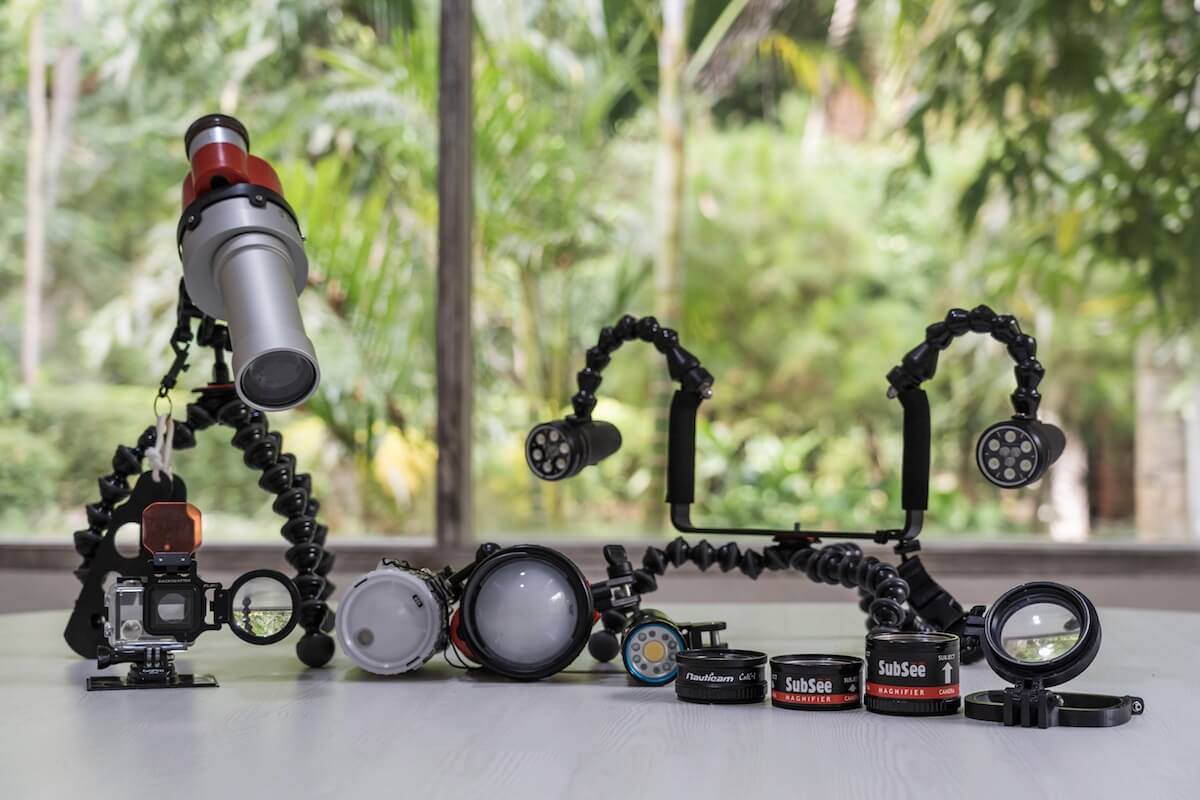
- Decide where you will use your light the most and how often. The rest of your decisions should be mostly based around this.
- Pick up and carry a few lights around to see what feels most comfortable in your hand. Keep in mind that a light with batteries in will weigh more than one without. Once you are underwater with your light it will also weigh less.
- Evaluate the grip for your hand.
- Test how easy it is for you to turn it on and off (you may want to don any gloves you wear to dive when trying this).
- Think about how comfortable it will be to hold the light for an hour-long night dive. Is it stretching the reach of your hand? Is it likely your fingers or hand will cramp?
- High-quality dive lights are expensive and the price tends to increase in proportion to the battery life. If you are planning to night dive or cave dive, a longer battery life is essential. If you intend to dive during day time and only use the light when peering into crevices etc, battery life and burn time are less important.
- Keeping in mind your needs and intended use of the light, consider the best bulbs for your purpose. Along with battery life, prices generally become higher as the number of lumens increases.
- Consider some of the additional optional features mentioned above, as well as any bonus items that are included in the manufacturers or retailers packages, for example lanyards, charger cables and plugs, and then choose the best light for your dive needs.
- It is essential to buy a dive light from a reputable manufacturer. Their products have proven quality and reliability, and getting trustworthy repairs and assistance through customer support is more accessible.
Dive Light Diving Etiquette
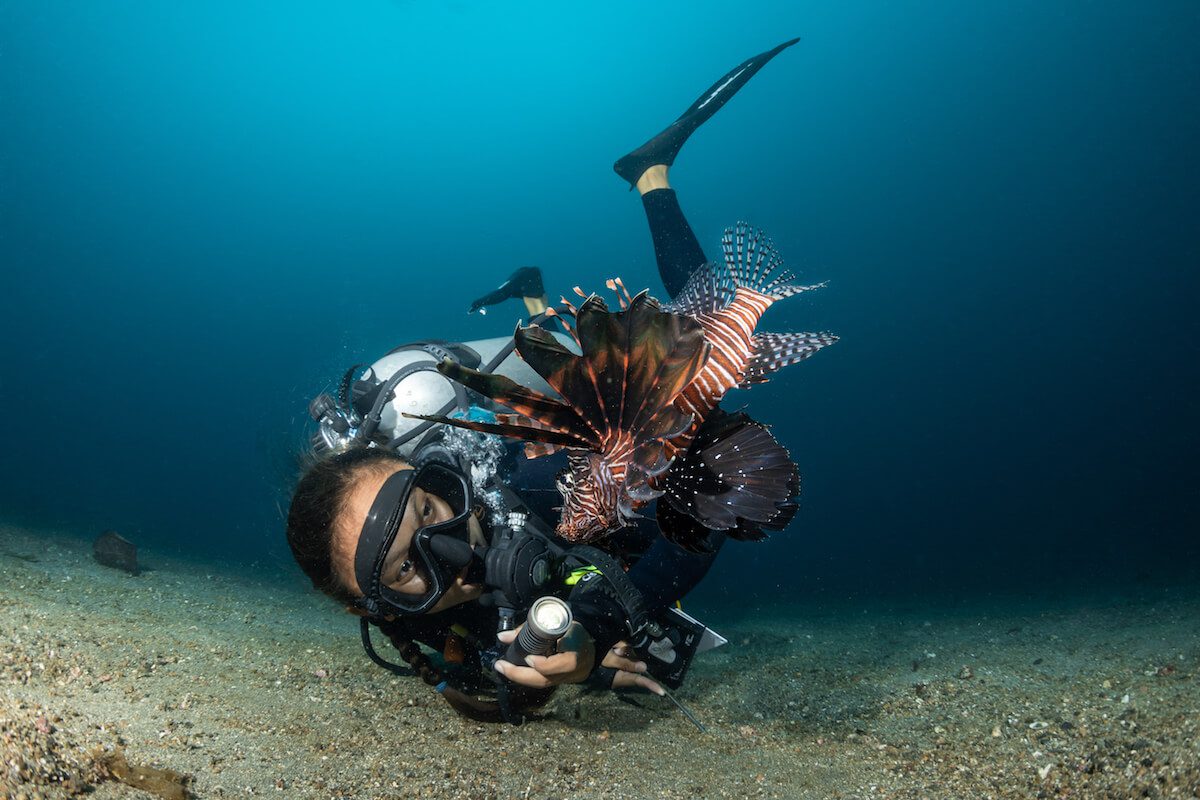
Divers should use proper light etiquette underwater. This involves:
- Keeping your beam directed forward and as stable as possible.
- Move your beam slowly and avoid jerky or rapid movements. Sharp back and forth movements can be mistaken by others as the signal for an emergency.
- Be aware of other divers and never shine your light into another diver’s face and eyes.
- If you are the dive leader, dim your light if possible. This allows the lights of those following to be more prominent and easier to spot, as well as enhancing underwater communication.
Dive Lights Maintenance
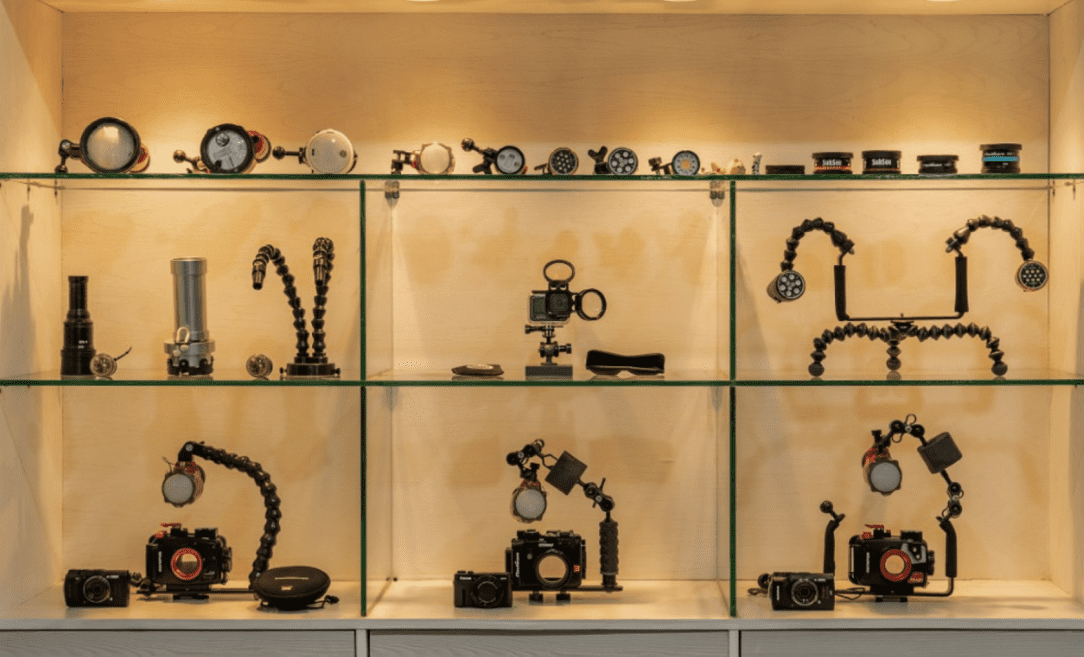
Regardless of which dive light you choose, you’ll want to take good care of it to extend its lifespan. Here are a few tips on maintaining your dive light, both in and out of the water:
- When diving with your light, ensure it is either in your hand or safely secured. A dangling or hanging light is a safety hazard, a danger to marine life, and a danger to itself!
- Rinse your light in fresh water after every dive and ensure the light is dry prior to storing. Do not store a dive light with the batteries inside.
- Maintain any O-rings and check them before every dive. Slide O-rings between your finger and thumb and feel for any abrasions. Ensure the O-ring is clean and apply silicone grease as needed.
- Use freshly charged batteries and avoid using batteries that you know are already running low.
- If you do not plan to use your light for a while, remove the O-rings prior to storing away. Apply silicone grease to the O-rings and store in a sealed Ziplock bag.
Ask us about Lights and Lighting in a Workshop!
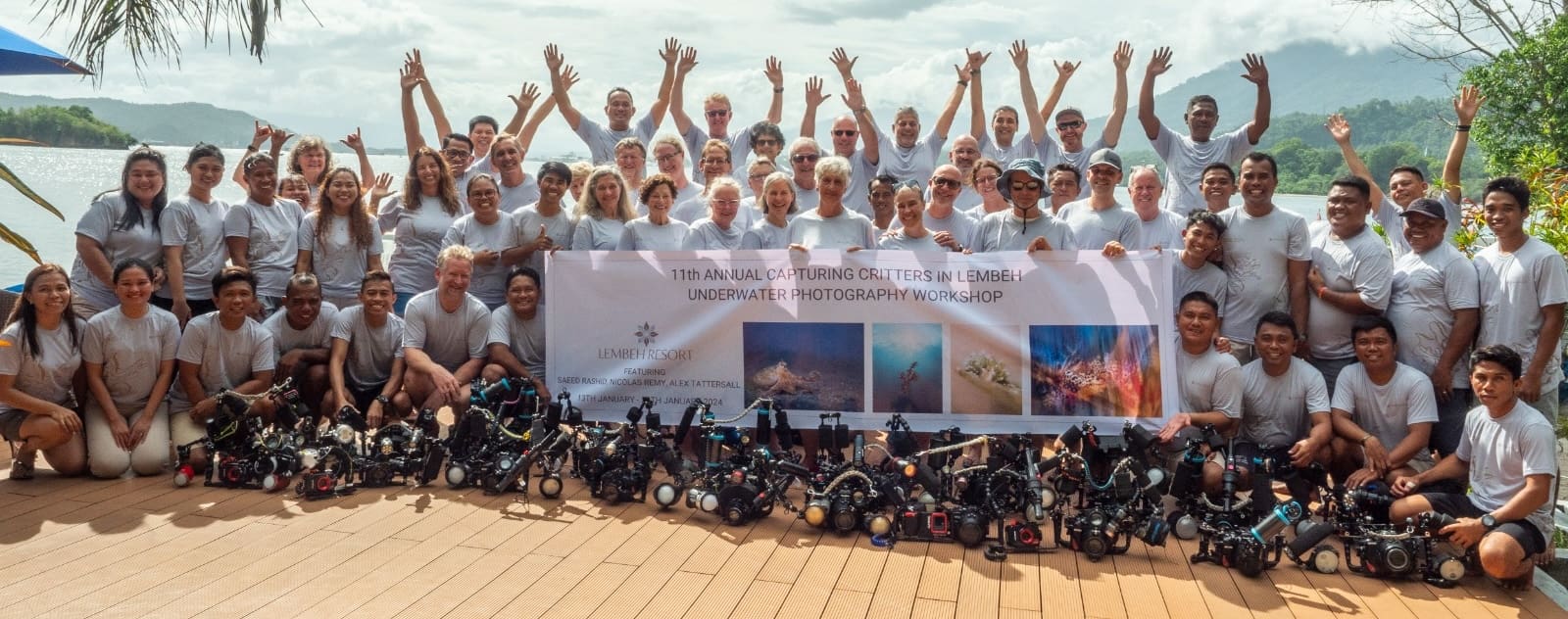
Capturing Critters in Lembeh UW Photography Workshop 2024
Capturing Critters in Lembeh UW photography workshop is back in January 2025. We are extremely excited to welcome Ron Watkins (USA), Paul Duxfield (UK), and Renee Capozzola (USA).
Join us in Indonesia for the 12th annual Capturing Critters in Lembeh UW Photography Workshop and experience North Sulawesi’s most iconic dive sites, while enjoying some spectacular extras.
Check this link to get detailed information: Capturing Critters in Lembeh UW Photography
Book Your Stay at Lembeh Resort
If you are ready to book your stay with us – or would like more information about our rates and availability contact us at reservations@LembehResort.com.
Further Reading
If you enjoyed reading this article, you may also enjoy some of our other articles about marine life found in the Lembeh Strait – complete with tips for photographers too!
The Importance of Sea Turtles in North Sulawesi


